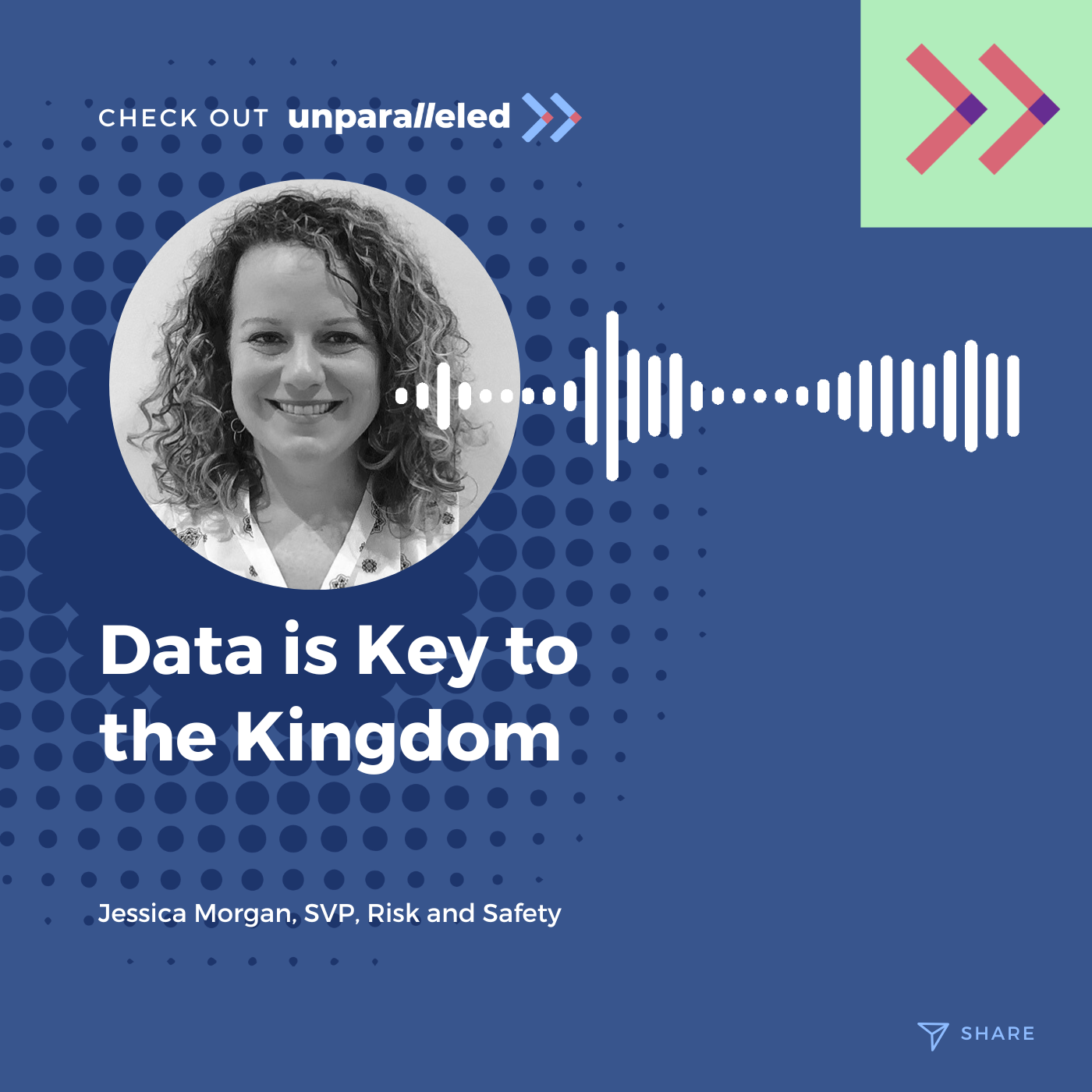podcast · Written by Guest User
Risk Management Analysis: Transforming Data into Action

Risk Management Analysis: Transforming Data into Action
Unparalleled Episode 005: Jessica Morgan, SVP of Risk and Safety at ABM Industries
Risk management analysis is pivotal in navigating modern business complexities. Joining us for today’s episode, Jessica Morgan, an expert on this subject.
As the Senior Vice President of Risk and Safety at ABM Industries, Morgan shares her insights on the importance of data-driven risk management, the value of collaboration across departments, and the holistic approach to buying insurance.
Creative Strategies for Data-Driven Risk Management
1. Buying Insurance Differently
Buying insurance is not the only function of the risk management department, but it is a big chunk of it. There are many best practices for securing insurance coverage for an organization, but some of those practices are now outdated.
Risk managers need to adopt a fresh perspective when it comes to purchasing insurance. This involves looking across the organization and identifying the various risks involved and how they come in.
They need to then determine if these risks are correlated or uncorrelated. Risk professionals also need to evaluate retentions and coverages and what’s available in the market.
It’ll also be useful to gauge the risk appetite of senior management and the board. Collaborating with different stakeholders, such as legal, finance and the board, helps align perspectives and ensure comprehensive coverage.
2. Creative Problems Require Creative Risk Management Solutions
Risk professionals can’t afford to do things the way they’ve been doing them. In today’s rapidly changing landscape, it’s imperative for risk professionals to be more creative and collaborative in their approach to managing risks and securing insurance coverage.
They need to think outside the box and find different solutions to the issues they’re dealing with.
Luckily for risk professionals, being creative and thinking outside of the box does not equate to complexity. Sometimes the simplest solutions are the ones that drive the best value for an organization.
“The entire risk management process is all about trying to find a solution to a problem and then evaluating what that impact is. It’s about many different levers that you pull in order to drive those results.” — Jessica Morgan
3. The Impact of Education
Risk professionals do so much for their organizations, yet the work they do is often ambiguous to many people. This is why risk professionals need to devote time to educating the people in their organization about risk management and what it entails.
Risk management significantly impacts the organization’s financial and overall performance. It’s essential to make it known how risk management affects the organization.
Education plays a crucial role in helping stakeholders understand the complexities of risk management and the value it brings to the organization.
“I spend a lot of time educating people at ABM as to what risk management is because no one seems to really understand risk management. They think it’s safety or it’s just buying insurance. But I think that is a very simplistic way of looking at what we do because we have such a big impact on the organization.” — Jessica Morgan
4. Success Through Collaboration
To align risk management objectives with the organization’s broader goals, risk managers must prioritize collaboration and communication with other stakeholders.
This involves working closely with departments like finance, HR, and legal to ensure a cohesive approach to risk management.
By involving key stakeholders in data analysis and decision-making processes, risk managers can prevent unintended consequences and develop insurance programs that are in line with the company’s strategic objectives.
Building strong relationships with those in your organization makes a huge difference. For example, forging a strong relationship with operators and employees shows that risk managers are willing to work in the trenches with them.
This helps position risk managers as valuable resources who understand the operational challenges and are willing to collaborate in finding mutually beneficial solutions.
Risk managers should also partner closely with their finance teams. When risk professionals are evaluating the levels of risk they want to transfer or how to optimize their spend, they should bring the finance team into the fold.
The finance team can offer a different perspective the risk manager wouldn’t have otherwise thought of.
By fostering collaboration and understanding various perspectives, risk managers can achieve consistent objectives across the organization.
5. Harnessing the Power of Data
It’s no surprise that Jessica is an advocate of using data in her risk management practices. Data is essential for effective risk management since it lays the foundation for informed decision-making.
Risk managers need to consolidate and aggregate data to harness the full power of data. Once they do this, they can gain actionable insights and identify trends that can lead to improved risk mitigation strategies.
With data in front of risk managers, they can determine the risks they want to transfer to their insurance carriers and what they want to retain. Using data effectively enables risk managers to identify areas for improvement and implement targeted solutions.
By analyzing data, they can proactively address challenges, such as safety issues, HR concerns, or operational inefficiencies.
Unfortunately, data can be a big pain point for many in the industry. Data is often scattered and fragmented across various systems.
Risk managers need to consolidate data from different sources into a central repository. They need to ensure that the repository can generate meaningful and understandable reports for all stakeholders.
According to Jessica, risk managers need to tailor their communication and reporting to the needs of different audiences, avoid complexity, and include the right stakeholders to ensure alignment and effectiveness.
She says that if the reports are too complex, people are not going to look at them or use them.
Jessica firmly believes that “liars never use numbers, and numbers never lie.”
She has used this adage to transform ABM’s risk management department into one that is data-driven. She says the key is to find simple yet impactful solutions that can be seamlessly integrated into daily routines, driving long-term results without disrupting operations.
“You’re not going to be successful unless you can accurately take the data that’s given to you and do something with it. And then what you do with that data has to be meaningful for your company.” — Jessica Morgan
In today’s dynamic business environment, risk managers must adapt their approach to risk management.
By leveraging data effectively and collaborating with various stakeholders, risk managers can drive meaningful changes within their organizations.
Jessica Morgan shares that the key lies in analyzing data, simplifying communication, and aligning risk management goals with the organization’s broader objectives. By doing so, risk managers can navigate the complexities of modern risk management and enhance the overall resilience of their organizations.



